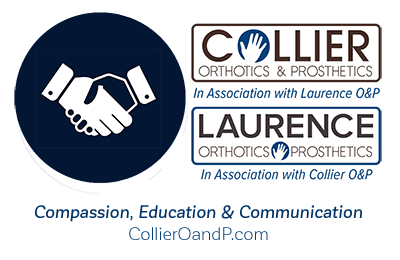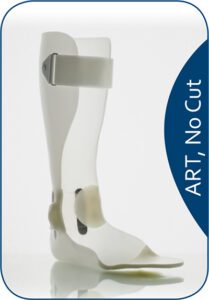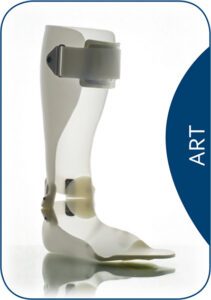Helping patients improve ambulation after a stroke.
The role of an O&P facility is to provide an orthosis that will aid the patient’s stability and ambulation during the stroke recovery process. The Orthotist will visit the patient at their care facility and is brought up to speed by the physical therapist and physician with the patient’s diagnosis and outcome goals. We fabricate orthoses for patients with mobility issues who need help with ambulation and rehabilitation at home.
Post Stroke Patient Care Methodology
During the motor skills assessment our team member walks the patient in parallel bars with no shoes or socks, the Orthotist holds the knee and foot to attain what kind of forces need to hold the patient in correct alignment and stabilize their muscle insufficiency. This is determined by the counter forces that we place on the knee and foot. Once we determine how much force is needed to control the patient’s ankle, foot and knee, a decision can be made on what brace will best help the patient walk.
The team agreed that an ANC (articulated non-cut) AFO (Ankle Foot Orthosis) was the right solution. The function of this brace is to lock the patient’s ankle at the desired position (90 degrees). This helps with toe clearance and to prevent the foot from dragging while walking. It also helps mitigate hyperextension.
When it is determined what type of orthosis is needed, it is fabricated to specifications. It must help the patient meet therapy goals such as:
- Toe pick up, ankle stabilization and improved gait
- Sufficient clearance or relief for the head of the fibula
- The patient can ambulate safely in the orthosis
- The Varus/Valgus correction provides the desired support
- Skin check was satisfactory
- The range of motion settings meet prescription criteria
When we fit the patient after fabrication we double check:
- The orthosis conforms to the contours of the body
- The finished height of the orthosis is appropriate
- The patient is stable while standing
- The workmanship of the orthosis is satisfactory
- The patient can sit and adequately flex knee with orthosis
The ANC AFO solution is fairly common for patients graduating from rehabilitation settings but who still need ambulation support to get back to their daily activities. The ANC orthosis we have developed is unique – it can be hinged at the ankle once the patient regains stability and strength. This gives the patient a more natural gait as they transition through their therapy. Essentially it is two braces in one, saving the patient a second co-pay, and saves waiting time during the healing process. For any stroke patient, it is critical to fabricate and fit a brace in a timely fashion to get the patient ambulatory as soon as possible for neuro muscular regeneration and gait training. We put a high importance on getting the patient what they need to continue to improve.
Why the first 3 hours, the first 3 days, and the first 3 months are significant during stroke recovery.
- The first 3 hours are vitally important for patient to have critical medical care that will make a difference in their survival rate. Call 911, do not drive self or patient to hospital. Emergency responders can begin medical care as soon as they arrive and while patient is being transported
- The first 3 days in the hospital gives doctors time for tests and assessments to determine the course of care. Rehab can begin as early as 24 to 48 hours after the stroke while the patient is still under hospital care.
- The first 3 months are therapeutically important as this is when the brain is most capable of making reconnections through neuroplasticity. This can also be an exhausting time for a stroke survivor and they may need mental health and caregiving support.
Looking for a solution or a second opinion?
Contact one of our specialists at 916-979-9729 or email us.









